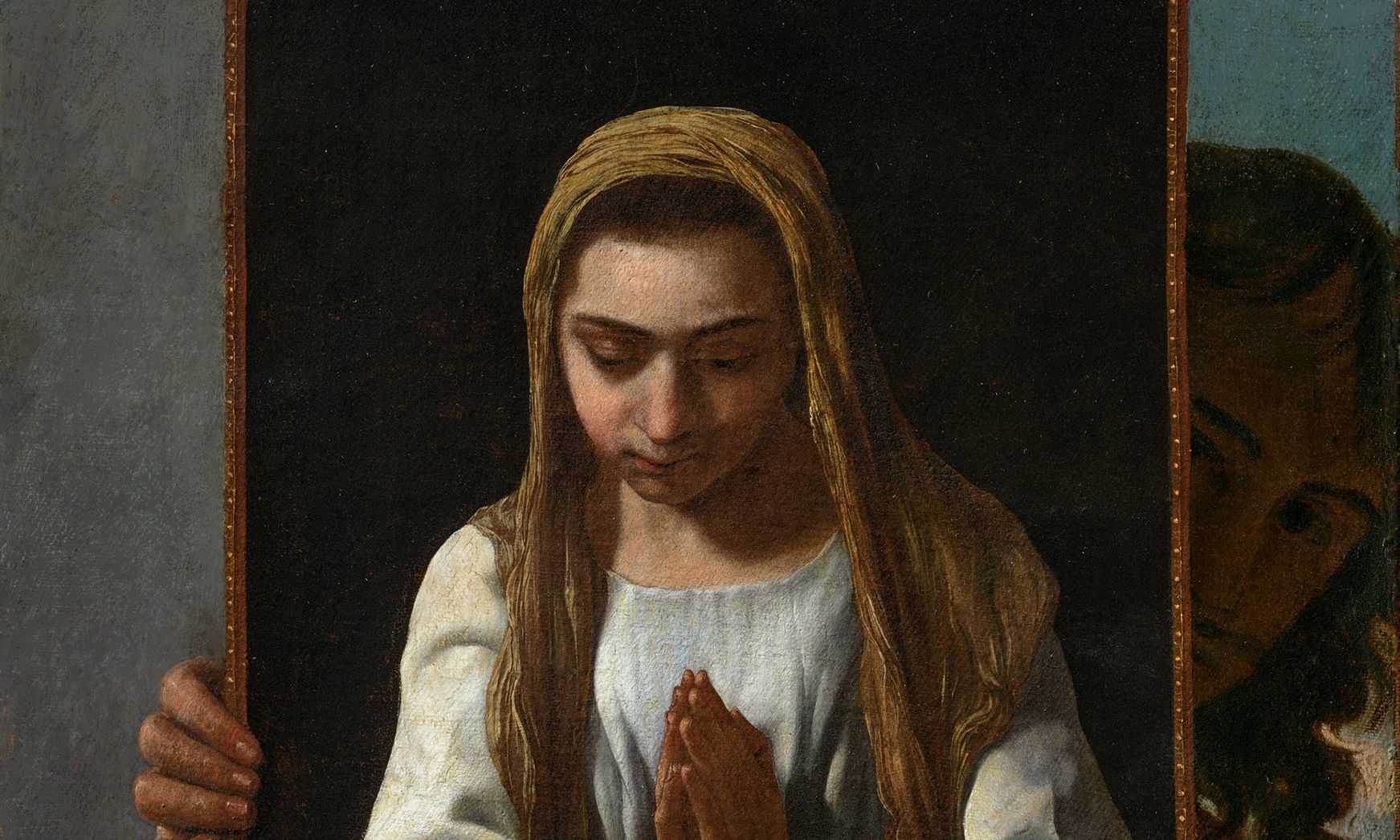Michael Sweerts, A portrait of the artist (?), presenting the Virgin in Prayer (around 1656-58) Courtesy Christie’s
Michael Sweerts, A portrait of the artist (?), presenting the Virgin in Prayer (around 1656-58)
Old Masters Part 1, Christie’s, London, 7 December
Estimate: £400,000-£600,000
Hot off the heels from its record-setting £12.6m (with fees) sale of a painting by Michael Sweerts in London this July, Christie’s is offering another rediscovered work by the Flemish Baroque artist. This painting has an unusual subject and composition. “When I first saw the painting, I only saw the Virgin in prayer—it took me a few seconds to even spot that Sweerts has depicted himself holding a painting within a painting,” says Maja Markovic, Christie’s Old Masters specialist. “It’s an arresting work, completely unique to the artist’s oeuvre.”
The work was held in a private Austrian collection in the 20th century, but prior to this its provenance is unknown. The consignor, who inherited the work from that collection, approached Christie’s at the beginning of the year to confirm his suspicions that the painting was by Sweerts. It has been examined in the auction house’s London offices and also by the world’s leading scholar on Sweerts, who “is in agreement with Christie’s judgement”, Markovic says.
Sweerts is an elusive artist with a patchy biography who was “only really rediscovered in the mid-20th century”, Markovic adds, and until quite recently, he was little known outside of academic communities and institutions. While far from a common artist at auction, his works are now surfacing at sales more often, with five attributed to him having come to the block this year.
Rembrandt van Rijn, The Adoration of the Kings (around 1628) Courtesy Sotheby’s
Rembrandt van Rijn, The Adoration of the Kings (around 1628)
Old Master & 19th Century Paintings Evening Auction, Sotheby’s, London, 6 December
Estimate: £10m-£15m
In 2021, a small nocturne depicting a Biblical scene came to auction at Christie's, attributed to the Circle of Rembrandt and carrying an estimate of €10,000-€15,000. It now returns to the block, this time at Sotheby's, as a bona fide painting by the Dutch master, with an eight-figure price tag to match. Rembrandt painted the work in his early 20s, when he was living in the Dutch city of Leiden. “Rembrandt’s Leiden period is one of very rapid growth—and it is often difficult to be certain of chronology in these works as a result. He is an artist in a hurry,” says George Gordon, the Sotheby’s specialist who led an 18-month research project to reattribute the work, after being approached by the winning bidder from the 2021 sale. The painting was studied using detailed infrared imaging technology, which allowed Sotheby’s to discover instances of repainting. A key finding is that Rembrandt reoriented the protagonists’ heads towards the Holy Family, “tightening the composition for heightened psychological drama”, Gordon says. Christie’s holds the world auction record for Rembrandt, which was set in 2009 when Portrait of a Man with Arms Akimbo (1658) sold in London for £20.2m (with fees).
Blinky Palermo, Untitled (1976-77) Courtesy Ketterer Kunst
Blinky Palermo, Untitled (1976-77)
Evening Sale, Ketterer Kunst, Munich, 8 December
Estimate: €600,000-€800,000
This eight-panel, acrylic-on-aluminium work is the last one executed by the German painter Blinky Palermo before he died, aged 33, in the Maldives. While Palermo’s final creative phase took place predominantly in New York, from 1974 to 1977, during which time he focused almost exclusively on making multi-part works, he created this piece in a Düsseldorf studio he took over from his friend and contemporary Gerhard Richter in 1976. Another of Palermo’s prominent artist friends, Imi Knoebel, documented this work in photographs that he took shortly after the painter’s death. Palermo’s last years were also his most successful, as he exhibited metal and multi-part works at both the 13th Bienal de São Paulo in 1975 and the German Pavilion at the Venice Biennale the following year. While his prices are far eclipsed by some of his German contemporaries, they can still make waves at evening sales. His record stands at $6.3m (with fees), made by Sotheby’s New York in May, for a dyed cotton-on-muslin work from 1970.
The Hever Nymph and Satyr, a Roman marble group of a nymph and satyr (around second century AD) Courtesy Bonhams
The Hever Nymph and Satyr, a Roman marble group of a nymph and satyr (around second century AD)
Antiquities, Bonhams, London, 7 December
Estimate: £700,000-£1m
Leading Bonhams’s Antiquities evening sale is this 71cm-high Roman marble of an amorous encounter between a nymph and satyr—one of only three known “almost complete” examples of this type, alongside ones in the Capitoline Museums in Rome and the British Museum in London, according to Bonhams’s catalogue notes. This sculpture is known as the “Hever group”, as it was installed in Hever Castle in Kent, southern England, by its former owner, William Waldorf Astor, of the dynastic Astor family in New York. He purchased the castle—formerly the home of King Henry VIII’s second wife, Anne Boleyn—in 1903 and installed the marble four years later in the Italian Gardens. The sculpture’s first recorded owner was the leading antiquities dealer Stefano Bardini, who was active in Florence from 1870 to 1920 and whose palazzo and collection were turned into the Bardini Museum in 1923. Astor purchased the marble from Bardini in the early 1900s.

